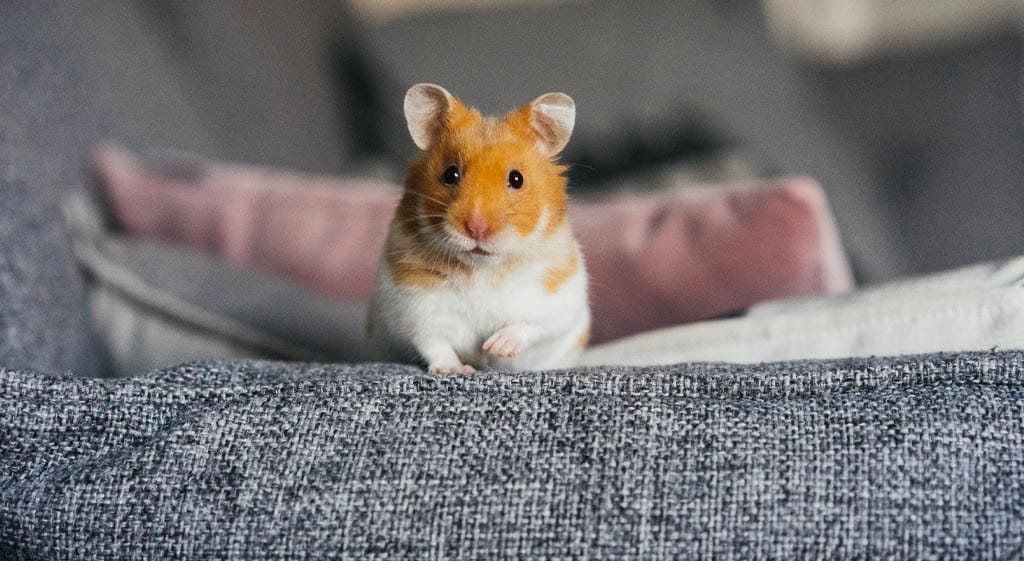
Caring for Hamsters: Everything You Need to Know
Hamsters are delightful, low-maintenance pets that can bring joy to your life with their curious and playful nature. This guide covers everything you need to know about hamster care, from choosing the right habitat to understanding their dietary and exercise needs, ensuring your furry friend lives a happy and healthy life.
🐶 Pet Star
11 min read · 22, Jan 2025

1. Choosing the Right Habitat
A suitable habitat is the cornerstone of your hamster’s well-being. Hamsters need a safe, comfortable, and stimulating environment to thrive.
Key Considerations:
- Cage Size: A spacious cage is essential. Aim for a minimum of 450 square inches of floor space.
- Ventilation: Opt for a wire cage or a tank with a ventilated lid.
- Bedding: Use soft, dust-free bedding such as aspen shavings or paper-based products. Avoid cedar or pine, which can be harmful.
- Hiding Spots: Include tunnels, houses, and other hiding spaces to help your hamster feel secure.
Pro Tip: Regularly clean the cage but avoid disturbing your hamster’s scent too often, as it can stress them out.
2. Providing a Nutritious Diet
A balanced diet is crucial for a hamster’s health and longevity.
Diet Essentials:
- Pellets: High-quality hamster pellets provide the necessary nutrients.
- Fresh Foods: Supplement their diet with fresh vegetables like carrots, cucumbers, and spinach. Avoid citrus fruits.
- Treats: Offer seeds and small pieces of fruit as occasional treats.
- Water: Provide fresh, clean water in a drip bottle and check it daily.
Foods to Avoid:
- Chocolate
- Garlic and onions
- Raw potatoes
- Sugary or salty snacks
3. Understanding Hamster Behavior
Hamsters are fascinating creatures with distinct behaviors that reflect their needs and mood.
Common Behaviors:
- Nocturnal Activity: Hamsters are most active at night. Provide plenty of toys to keep them entertained.
- Chewing: Chewing is a natural behavior. Offer chew toys to keep their teeth healthy.
- Scent Marking: Hamsters use their scent glands to mark their territory. This is normal and not a cause for concern.
Pro Tip: Handle your hamster gently and frequently to build trust and reduce skittishness.
4. Ensuring Proper Exercise and Enrichment
Exercise and mental stimulation are vital for a hamster’s well-being.
Ways to Provide Exercise:
- Exercise Wheel: Choose a solid-surface wheel to prevent injuries. It should be large enough to accommodate their size.
- Playpen: Allow supervised playtime in a secure area.
- Toys: Include tunnels, ladders, and chew toys in their habitat.
DIY Ideas:
- Toilet paper rolls make excellent tunnels.
- Create climbing structures using popsicle sticks.
5. Maintaining Good Health
Keeping your hamster healthy involves regular monitoring and preventive care.
Health Tips:
- Regular Checkups: Observe for signs of illness, such as lethargy, loss of appetite, or changes in fur condition.
- Nail Trimming: If nails become overgrown, consult a veterinarian.
- Teeth Care: Provide chew toys to prevent overgrown teeth.
Common Health Issues:
- Wet tail (diarrhea): Requires immediate veterinary attention.
- Respiratory infections: Monitor for sneezing or wheezing.
- Obesity: Avoid overfeeding and encourage exercise.
6. Creating a Bond with Your Hamster
Building a strong bond with your hamster requires patience and consistency.
Steps to Bonding:
- Let Them Adjust: Allow a few days for your hamster to acclimate to their new environment.
- Offer Treats: Hand-feed treats to build trust.
- Gentle Handling: Gradually introduce handling, starting with short sessions.
- Talk Softly: Speak to your hamster in a calm, soothing voice.
Pro Tip: Avoid waking your hamster suddenly, as this can startle them and cause stress.
7. Hamster Safety Tips
Ensuring your hamster’s safety is crucial, both inside and outside their cage.
Key Tips:
- Secure Cage: Make sure the cage is escape-proof.
- Supervised Play: Never leave your hamster unsupervised during playtime.
- Avoid High Drops: Hamsters can get injured if they fall from a height.
- Temperature: Keep the habitat in a room with a stable temperature, ideally between 65-75°F (18-24°C).
Q1: How often should I clean my hamster’s cage?
Ans) Spot-clean the cage daily and perform a deep clean once a week. Retain some of the old bedding to maintain their scent and reduce stress.
Q2: Can hamsters live together?
Ans) It depends on the species. Syrian hamsters are solitary and should always be housed alone, while dwarf hamsters can sometimes live in pairs or groups if introduced properly.
Q3: How long do hamsters live?
Ans) Most hamsters live 2-3 years, though this can vary depending on the species and quality of care.
Q4: Why is my hamster biting the cage bars?
Ans) Cage biting is often a sign of boredom or stress. Provide more toys and ensure their cage is spacious enough.
Q5: Can I bathe my hamster?
Ans) No, hamsters should not be bathed in water. Instead, provide a sand bath to help them clean themselves naturally.
Similar Articles
Find more relatable content in similar Articles
Explore Other Categories
© 2024 Copyrights by rPets. All Rights Reserved.